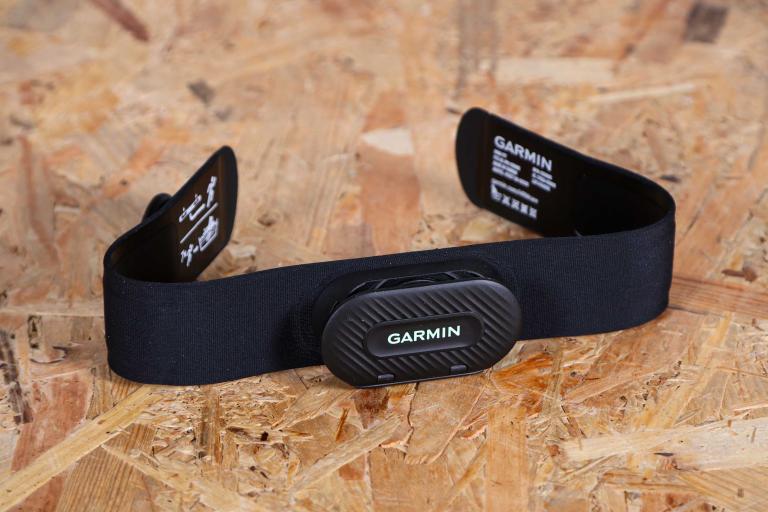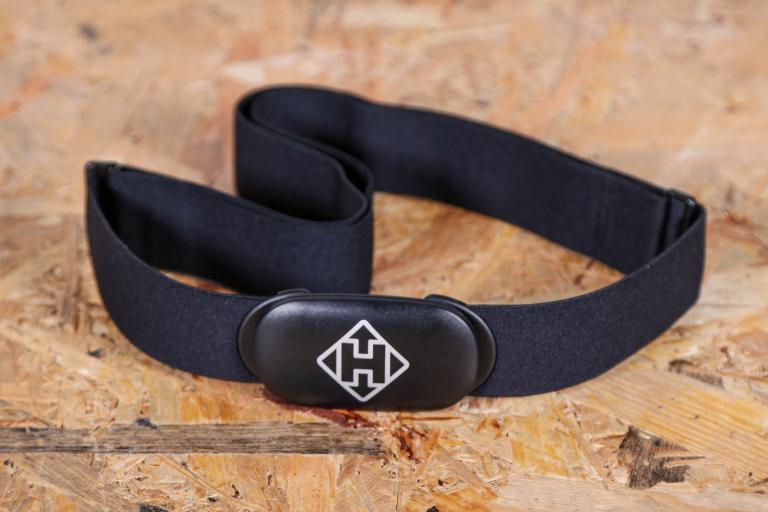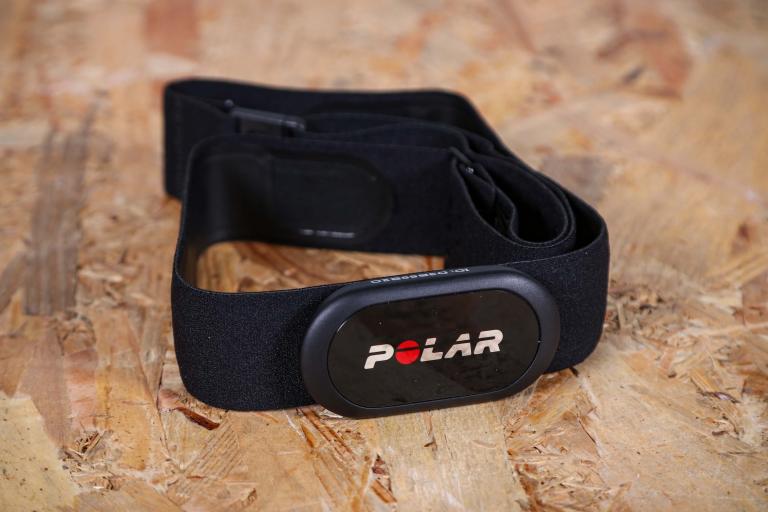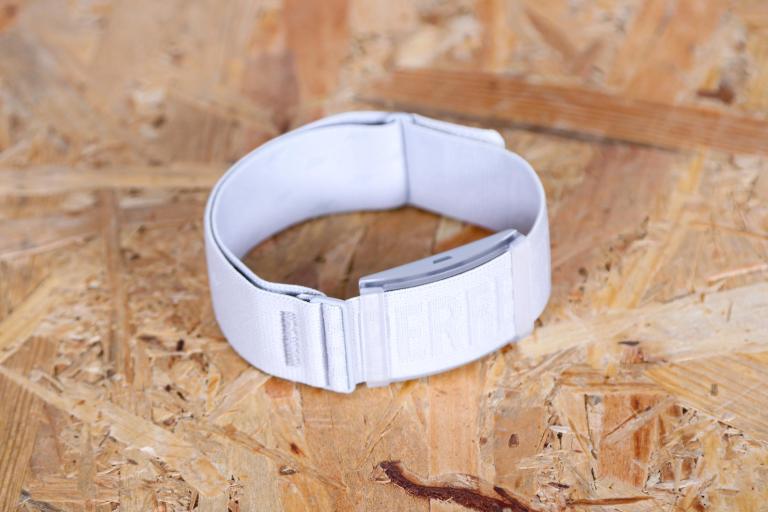- News
- Reviews
- Bikes
- Components
- Bar tape & grips
- Bottom brackets
- Brake & gear cables
- Brake & STI levers
- Brake pads & spares
- Brakes
- Cassettes & freewheels
- Chains
- Chainsets & chainrings
- Derailleurs - front
- Derailleurs - rear
- Forks
- Gear levers & shifters
- Groupsets
- Handlebars & extensions
- Headsets
- Hubs
- Inner tubes
- Pedals
- Quick releases & skewers
- Saddles
- Seatposts
- Stems
- Wheels
- Tyres
- Tubeless valves
- Accessories
- Accessories - misc
- Computer mounts
- Bags
- Bar ends
- Bike bags & cases
- Bottle cages
- Bottles
- Cameras
- Car racks
- Child seats
- Computers
- Glasses
- GPS units
- Helmets
- Lights - front
- Lights - rear
- Lights - sets
- Locks
- Mirrors
- Mudguards
- Racks
- Pumps & CO2 inflators
- Puncture kits
- Reflectives
- Smart watches
- Stands and racks
- Trailers
- Clothing
- Health, fitness and nutrition
- Tools and workshop
- Miscellaneous
- Buyers Guides
- Features
- Forum
- Recommends
- Podcast
review
 Wahoo Trackr Heart Rate monitor
Wahoo Trackr Heart Rate monitor£79.99
VERDICT:
Excellent heart rate monitor, and great to finally see one with a rechargeable battery
Rechargeable battery is a great step forwards
100 hour claimed battery life
Solid construction that feels very durable
Reliable data
Proprietary charge cable
Weight:
39g
Contact:

This product has been selected to feature in road.cc recommends. That means it's not just scored well, but we think it stands out as special. Go to road.cc recommends
At road.cc every product is thoroughly tested for as long as it takes to get a proper insight into how well it works. Our reviewers are experienced cyclists that we trust to be objective. While we strive to ensure that opinions expressed are backed up by facts, reviews are by their nature an informed opinion, not a definitive verdict. We don't intentionally try to break anything (except locks) but we do try to look for weak points in any design. The overall score is not just an average of the other scores: it reflects both a product's function and value – with value determined by how a product compares with items of similar spec, quality, and price.
What the road.cc scores meanGood scores are more common than bad, because fortunately good products are more common than bad.
- Exceptional
- Excellent
- Very Good
- Good
- Quite good
- Average
- Not so good
- Poor
- Bad
- Appalling
The new Wahoo Trackr Heart Rate monitor is a great improvement over the outgoing Tickr model – or certainly mine, anyway (though maybe I've just been unlucky). It's reliable, very well made and the rechargeable battery is a massive improvement for the product category as a whole – though it would have been nice to see a standard USB-C cable used here rather than a new proprietary charging cable.
Check out our guide to the best heart rate monitors for more options at various prices.
The Trackr Heart Rate features a standard adjustable strap, removable sensor with an IPX7 waterproof rating and, most importantly, a fully rechargeable lithium-ion battery with a claimed 100 active hours of battery life. The device feels a lot more solid than the previous Tickr monitor – it's well constructed with no visible ports or seams where sweat could get in, and the strap is well made too, with well-sealed sensor strips that don't feel like they'll peel off over time.
The Trackr Heart Rate performed almost faultlessly. I had one dropout, lasting for about 30 minutes, which I think was the battery dying. Aside from that, the data provided seemed reliable and it tracked well with my perceived exertion.
It was always quick to connect once my Wahoo Elemnt Roam V2 was turned on, and aside from that one dropout I had absolutely no issues in well over 100 hours of riding.
The strap has its own buckle to secure it to your chest, and the pod then clips on separately – as opposed to previous Wahoo heart rate monitors where the pod clicking onto the strap secures each end together. With my Tickr model, having to clip and unclip the pod every time I took the unit off and on felt clunky, so in theory this new design should reduce strain on the unit while also slightly improving the comfort of the strap.
The pod having a rechargeable battery means there's no battery opening – which is just one less thing to go wrong and will no doubt increase durability. The charge port at the bottom of the pod is exposed and has no cover, but given how small it is I can imagine a rubber cover would break off long before the usable life of the Trackr Heart Rate came to an end – so perhaps omitting this in the first instance is a good decision. It's a shame the cable provided is a proprietary design, though; I would have liked to see a USB-C charger here instead.
At £79.99 it's not a cheap option – it's more expensive than Polar's H9 (now £56.50) and 4iiii's Viiiiva (now £49.99) – but it's a little less than Polar's H10 (£86.50) and a lot less than the Garmin HRM Pro Plus (£119.99).
Conclusion
I had basically given up with heart rate monitors before the Trackr Heart Rate came along. Dave reviewed the Tickr back in 2020 and thought it was excellent, and David rated the Tickr X, so maybe I've just been unlucky, but my experience with both was that they'd worked OK for a few months before failing and no longer providing reliable data. The Trackr Heart Rate shows no signs of stopping after a solid 100 hours or so of testing, and has restored my faith!
Verdict
Excellent heart rate monitor, and great to finally see one with a rechargeable battery
road.cc test report
Make and model: Wahoo Trackr Heart Rate monitor
Size tested: One
Tell us what the product is for and who it's aimed at. What do the manufacturers say about it? How does that compare to your own feelings about it?
Wahoo says: "Accurate, reliable, comfortable and connected, the Wahoo TRACKR HEART RATE monitor offers athletes everything they need from a heart rate sensor to take their performance to the next level." I found the device to be a significant improvement over the previous Tickr model, and was very happy with its performance.
Tell us some more about the technical aspects of the product?
Wahoo lists:
Weight: 1.4 oz (39 g) with strap
Battery: Rechargeable Lithium Ion
Battery Life: Over 100 Active Hours
Sweatproof: Yes (Handwashable Strap)
Water Rating: IPX7
Strap Length: Adjustable from 27" to 36" (68cm to 91cm)
Maximum Chest: Fits up to 50" (127cm) chests
Connectivity: ANT+ and up to three Bluetooth connections
Supported Devices: iOS - iPhone, iPad, Mac, Android devices, Windows
Rate the product for quality of construction:
9/10
The pod's construction is solid and the strap feels really well made.
Rate the product for performance:
9/10
I experienced one dropout over the course of the testing period, but apart from that no issues.
Rate the product for durability:
9/10
Without a battery cover, there's one less point for sweat to ingress – which should improve durability.
Rate the product for weight (if applicable)
7/10
Weight isn't a massive concern of mine for a heart rate monitor, but 39g seems about in line with other models on the market.
Rate the product for comfort (if applicable)
9/10
The strap is very comfortable and easy to adjust.
Rate the product for value:
5/10
£79.99 is expensive for a heart rate strap, but the rechargeable battery helps justify it in my opinion – and it's cheaper than Polar's H10 and Garmin's HRM Pro Plus.
Tell us how the product performed overall when used for its designed purpose
The heart rate monitor performed really well and gave reliable data for the entire testing period.
Tell us what you particularly liked about the product
The rechargeable battery is a game changer. No more having to fiddle around swapping CR2032 batteries every few months.
Tell us what you particularly disliked about the product
Using a proprietary charging cable feels out dated. It would have been nice to see a USB-C charger.
How does the price compare to that of similar products in the market, including ones recently tested on road.cc?
It's in the middle: it's more expensive than Polar's H9 or 4iiii's Viiiiva, but cheaper than the Polar H10 and Garmin HRM Pro Plus.
Did you enjoy using the product? Yes
Would you consider buying the product? Yes
Would you recommend the product to a friend? Yes
Use this box to explain your overall score
It's excellent: reliable and well made, and the rechargeable battery is great, but it would have been nice to see a USB-C charger rather than a proprietary new cable.
About the tester
Age: 28
I usually ride: Road (Tarmac SL7) My best bike is:
I've been riding for: 10-20 years I ride: Every day I would class myself as: Expert
I regularly do the following types of riding: road racing, time trialling, cyclo cross, commuting, mtb, Occasional Ultra Racing
Latest Comments
- mitsky 14 min 3 sec ago
Is it any wonder that drink driving is still a problem when the police do nothing even with clear evidence like this: https://youtu.be/hw071PAofHQ
- Rendel Harris 20 min 33 sec ago
Such as, for example, saying: "It’s made from two types of fabric: super-loud yellow (orange is also available as a colour option, as is pink in...
- Mr Blackbird 25 min 33 sec ago
Possibly, but I think there will still be a time delay between receiving a warning and looking and the brain processing the image.I guess cycling...
- chrisonabike 2 hours 10 sec ago
Indeed - but again these are perhaps questions we should keep asking. Even if the immediate answer is "well we are where we are" or "how on earth...
- Surreyrider 2 hours 53 min ago
Specialized aren't that American. Merida owns something like 49%.
- wtjs 3 hours 47 min ago
Then smash bad driving behaviour very hard...
- David9694 8 hours 24 min ago
Calls for Oxfordshire transport chief to resign blocked...







Add new comment
15 comments
Get a XOSS HR from Aliexpress, mine has been perfect. Practically identical to the Wahoo, but less than half the price and no proprietary cable!
Seems expensive for what it is.
The Garmin though dearer includes storage logging for zero connectivity uses.
The Polar H10 does ECG monitoring (with a 3rd party app) for roughly the same price.
Especially since the similarly priced Tickr X did have that functionality.
Have to agree with most comments her.
USB C seems overkill.
The 10p coin and button batteries work well
Had mine for a few years, 3 or 4 battery changes with no issues.
Another piece of hardware that, once the battery no longer holds a charge, will find itself binned for the want of a replacement battery. It seems to be another example of progress without improvement.
Funnily enough, my experience with Wahoo TCKR is that when that needed a new battery, it would also go in the bin. The battery locating tabs would break, so a new battery wouldn't stay in place reliably. I've given up on chest strap HRM's and now just use the slightly unreliable data from my watch instead.
I have been using a Tickr for years, multiple battery changes with no problem at all.
Built-in non replaceable batteries are dumb for something like this.
I have been using a Tickr for years, multiple battery changes with no problem at all
Same with Polar H10.
I think you've probably got one of the early generation models. My first TickR lasted years so when it eventually died I happily bought another, which failed. As did the next two (same as reviewer, battery tabs breaking, sometimes within 20 minutes of using for the first time!).
I wonder environmentally what's better, a rechargeable battery saving perhaps 4-6 coin batteries being binned, versus binning the whole unit once the rechargeable battery dies...
No USB C is a big fail in 2024. It doesn't take much to lose a proprietary cable and it's yet another thing to remember when packing. Instant no-buy from me.
Totally agreed. Ridiculous that anyone gets away with this these days. Another Brexit bonus. Sigh.
USB C for charging is such a poor design. The old micro USB was a much more robust connection. I understand the advantages if data transfer is involved.
When it comes to something like this making it moisture proof should be the main consideration and I guess that is why USB c isn't used. Of course the real answer was a properly protected coin cell like the old tickr
I've seen quite a few similar style of connections on electronic devices that need to have some kind of waterproofing. I've bought a couple of cheap chinese smart watches that both had the same kind of thing and Mrs HawkinsPeter has a helmet with built in light that also uses that style. There seems to be differences in the spacing of the two pins, but otherwise, they're vaguely magnetic and presumably are chosen as they don't need holes in the casing (unlike USB-C).
USB C really isn't a good match for this kind of device and the environment it operates in - not just humid, but warmly humid and salty. A rubber flap would be too fragile and prone to being not being close properly.
Yes, another proprietary cable is annoying, but I can see the reason for it. Maybe there's a need for a "standard" cable to charge this kind of thing (think other wearables - Garmin and all the other watches)
There's kind of a standard for these kinds of devices, but the pin spacing can be different (this link is for a 2.84mm spacing): https://www.ebay.co.uk/itm/285591671092